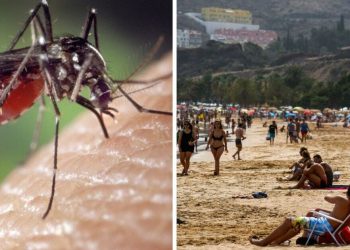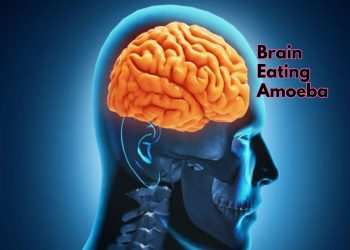Image by kjpargeter on Freepik
A 14-year-old boy undergoing treatment for primary amoebic meningoencephalitis, a rare infection caused by Naegleria fowleri, also known as the “brain-eating amoeba”, died at a private hospital in Kerala on Wednesday, according to state health officials.
The infection was traced back to a small pond where the boy had been swimming, prompting immediate preventive measures by health authorities.
This is the third reported case of this infection in Kerala since May. The rare but deadly disease has previously claimed several lives in the state. Under what circumstances can one be affected by it, and what are the associated symptoms? We explain:
What is primary amoebic meningoencephalitis?
Primary amoebic meningoencephalitis (PAM) is caused by Naegleria fowleri, a single-celled organism that lives in warm fresh water and soil. The amoeba infects people by entering the body through the nose, typically when they are swimming. Once inside, it travels to the brain, causing severe damage and inflammation.
The amoeba thrives in temperatures up to 46 degree Celsius and can be found in warm freshwater environments, such as lakes, rivers, poorly maintained swimming pools, splash pads, surf parks, and other recreational water venues.
How does ‘brain-eating amoeba’ infect people?
The ‘brain-eating amoeba’ infects individuals by entering through the nose during activities such as swimming. It then migrates to the brain, where it destroys brain tissue and causes swelling.
It is important to note that people cannot get infected by drinking contaminated water, and it is not communicable from person to person.
What are its symptoms?
Initial symptoms include headache, fever, nausea, and vomiting. As the infection progresses, symptoms can escalate to a stiff neck, confusion, seizures, hallucinations, and eventually coma.
According to the US Centers for Disease Control and Prevention (CDC), most people with primary amoebic meningoencephalitis die within 1 to 18 days after symptoms begin, usually leading to coma and death after about five days.
Treatment for primary amoebic meningoencephalitis
Currently, there are no definitive treatments for primary amoebic meningoencephalitis. Doctors use a combination of drugs, including amphotericin B, azithromycin, fluconazole, rifampin, miltefosine, and dexamethasone, but these treatments have not been consistently effective.
Past incidents of infection
On May 20, a five-year-old girl from Munniyoor in Malappuram died from primary amoebic meningoencephalitis after bathing in the Munniyoor river. Additionally, a 12-year-old boy from Ramanattukara, Malappuram, is in critical condition at Baby Memorial Hospital after developing symptoms such as fever, headache, and vomiting within 5-6 days of swimming in a pond.










Be First to Comment